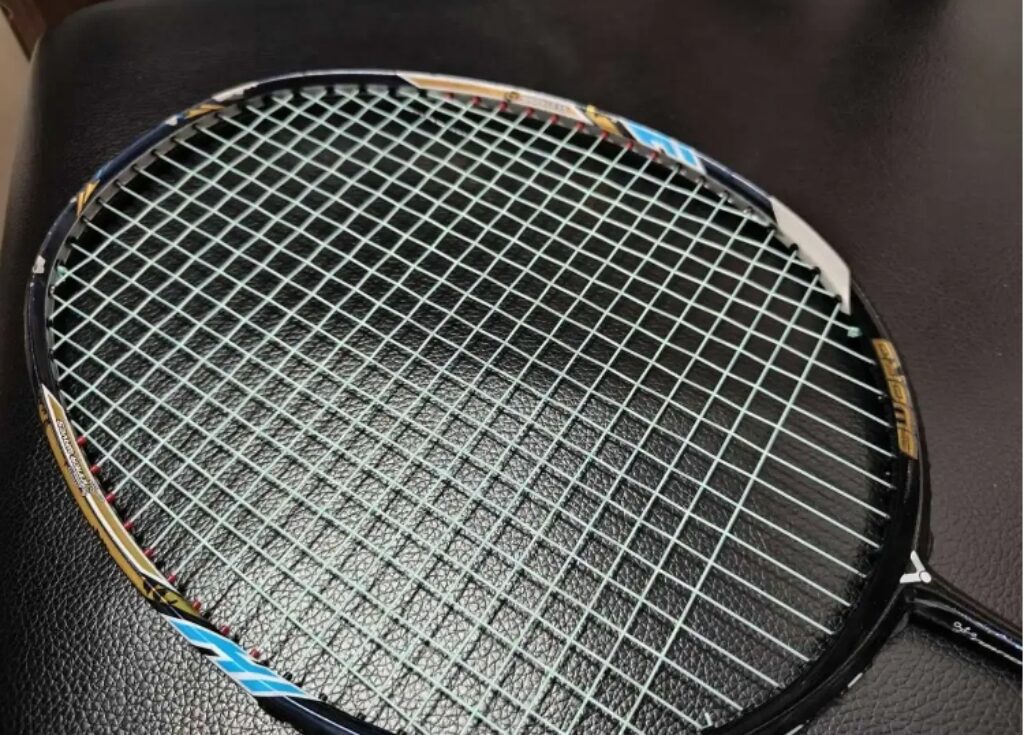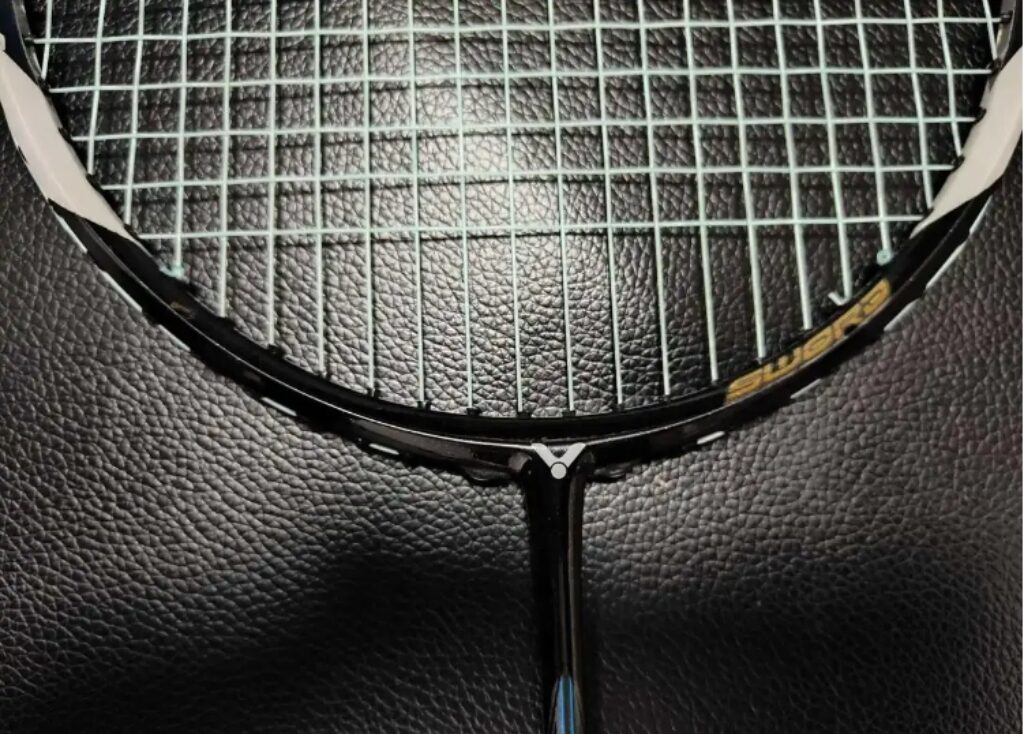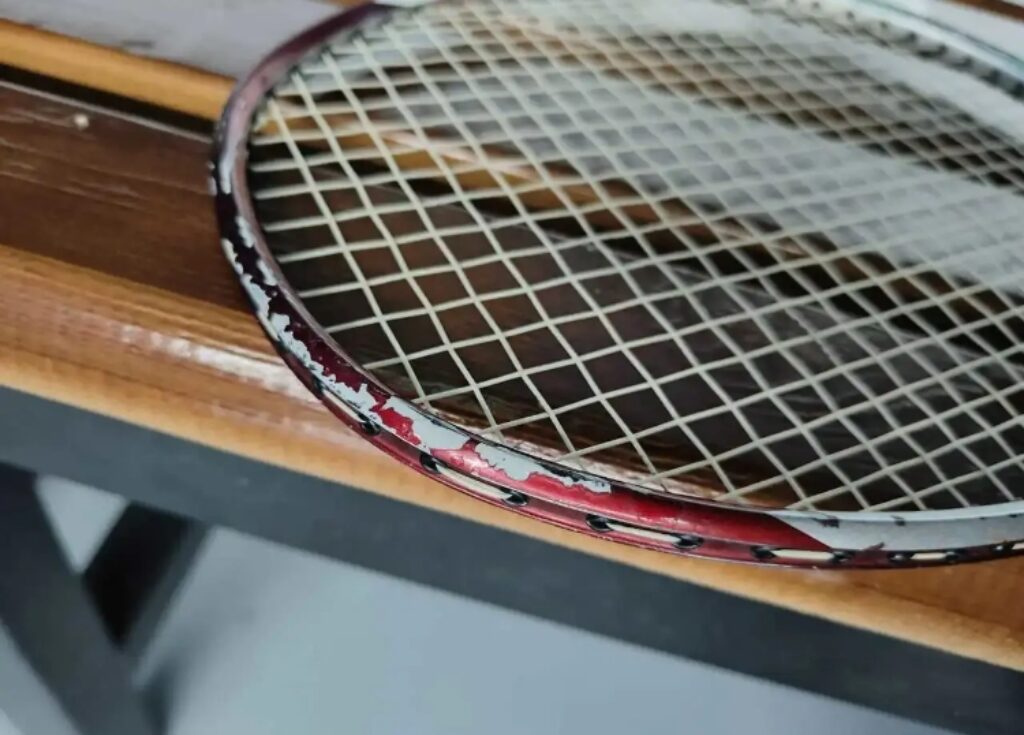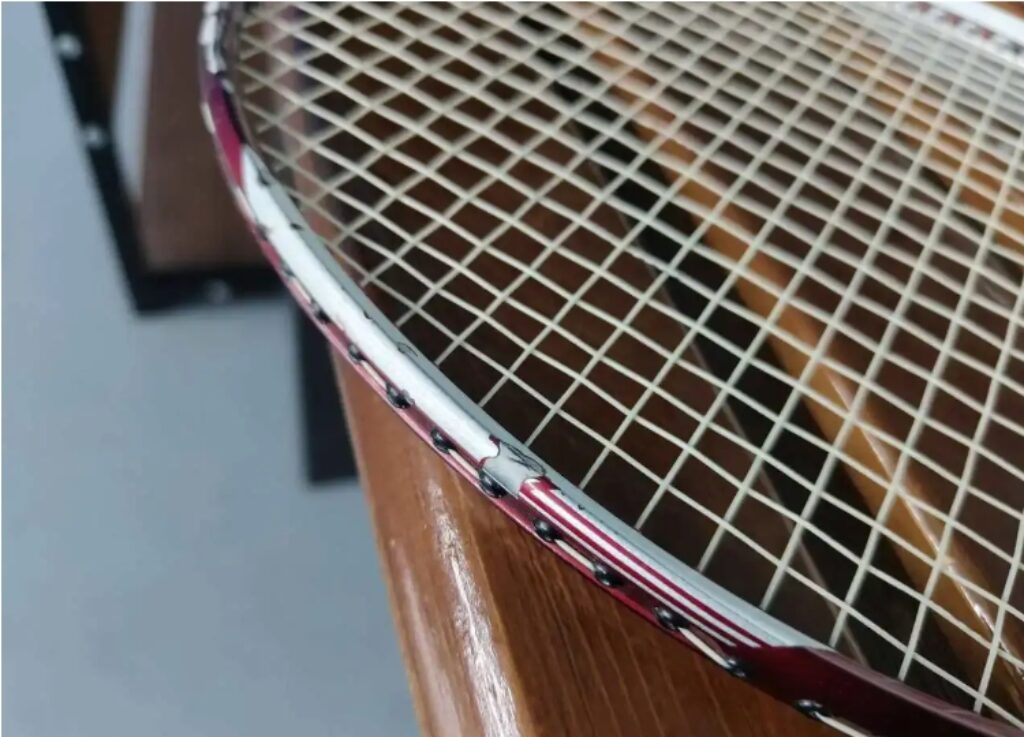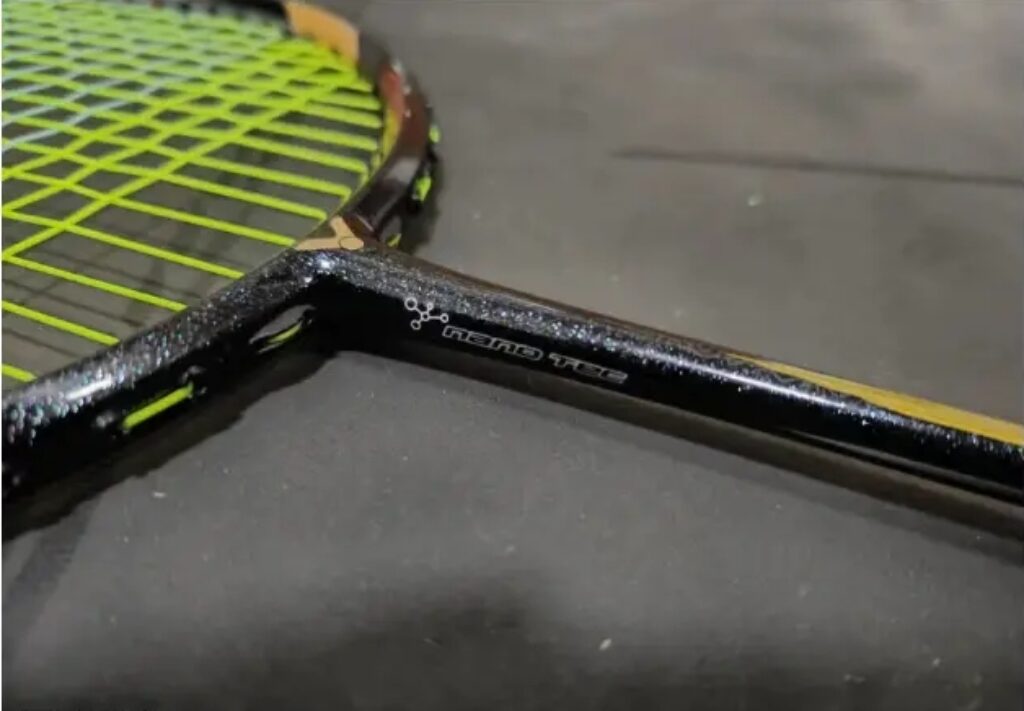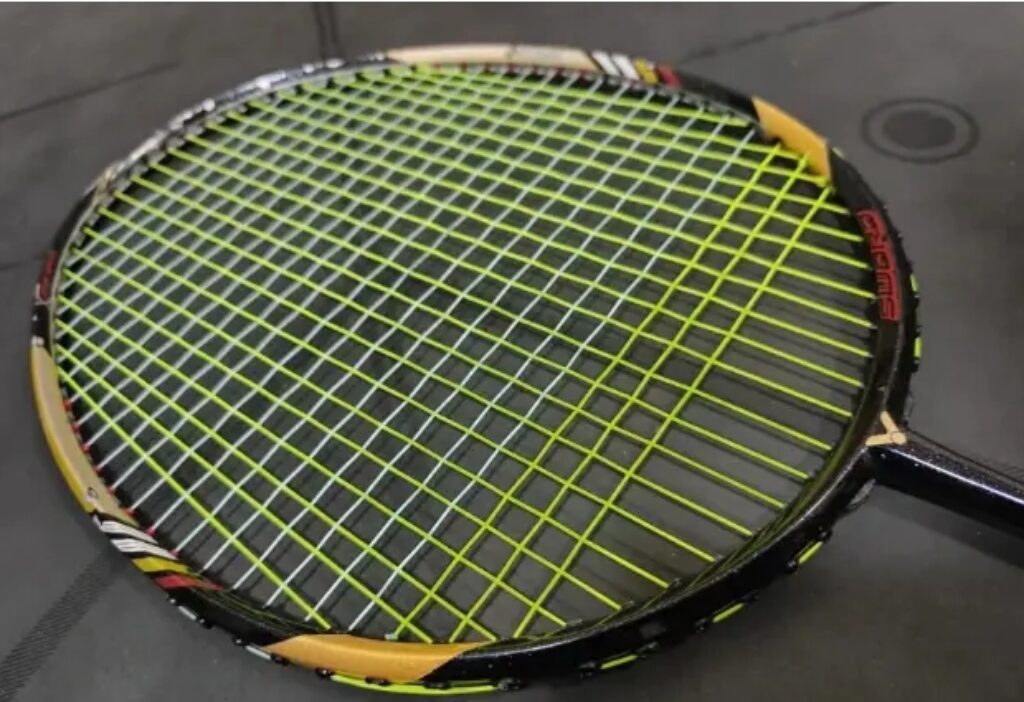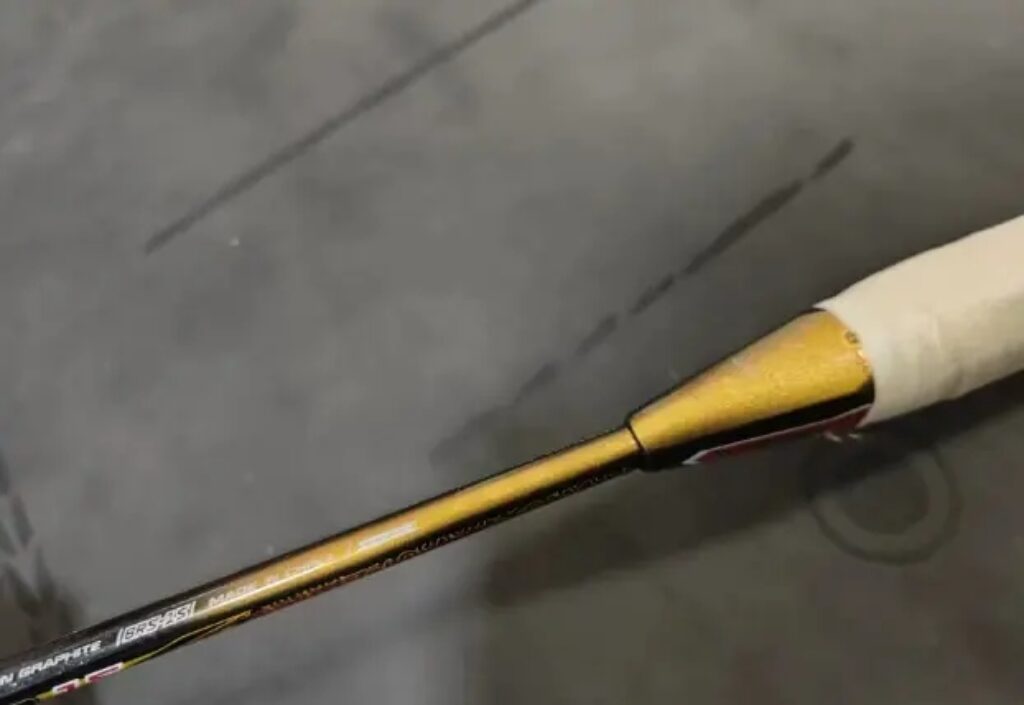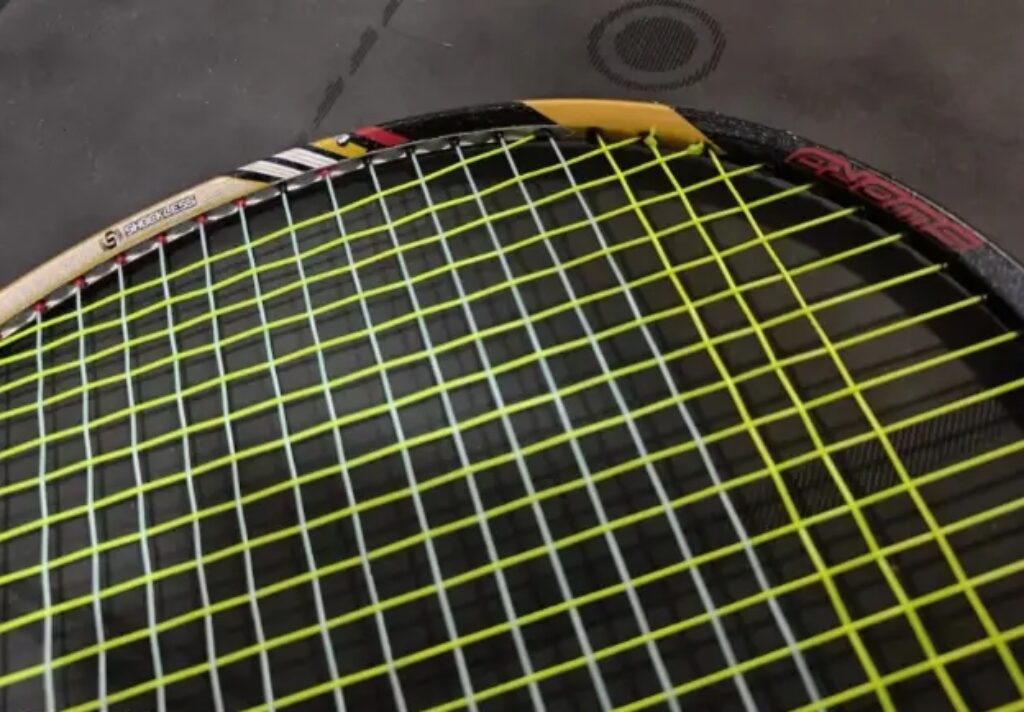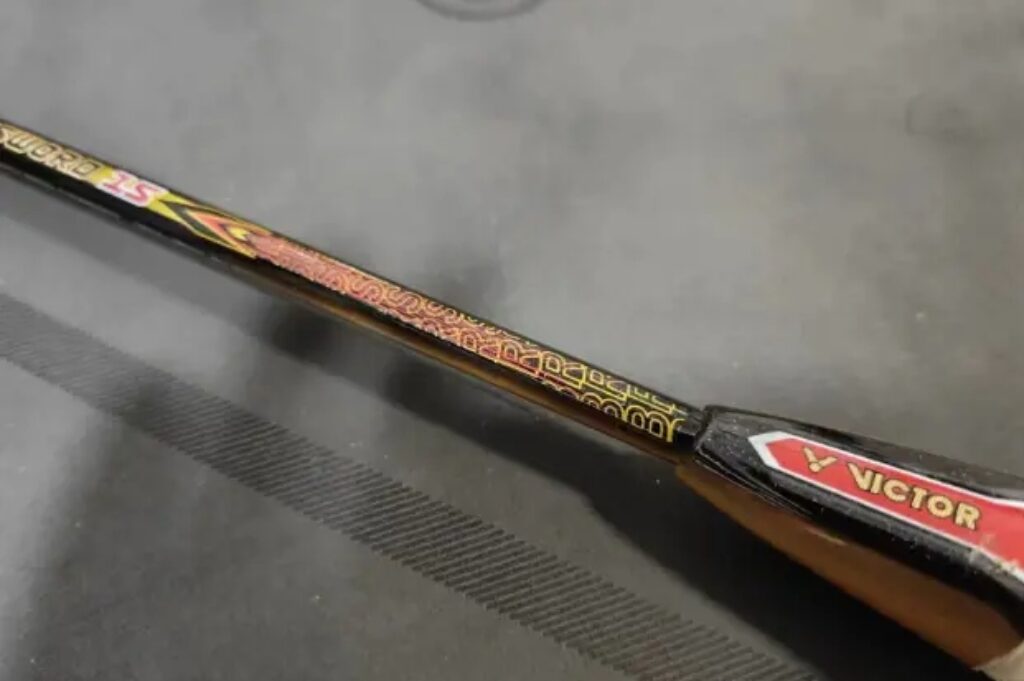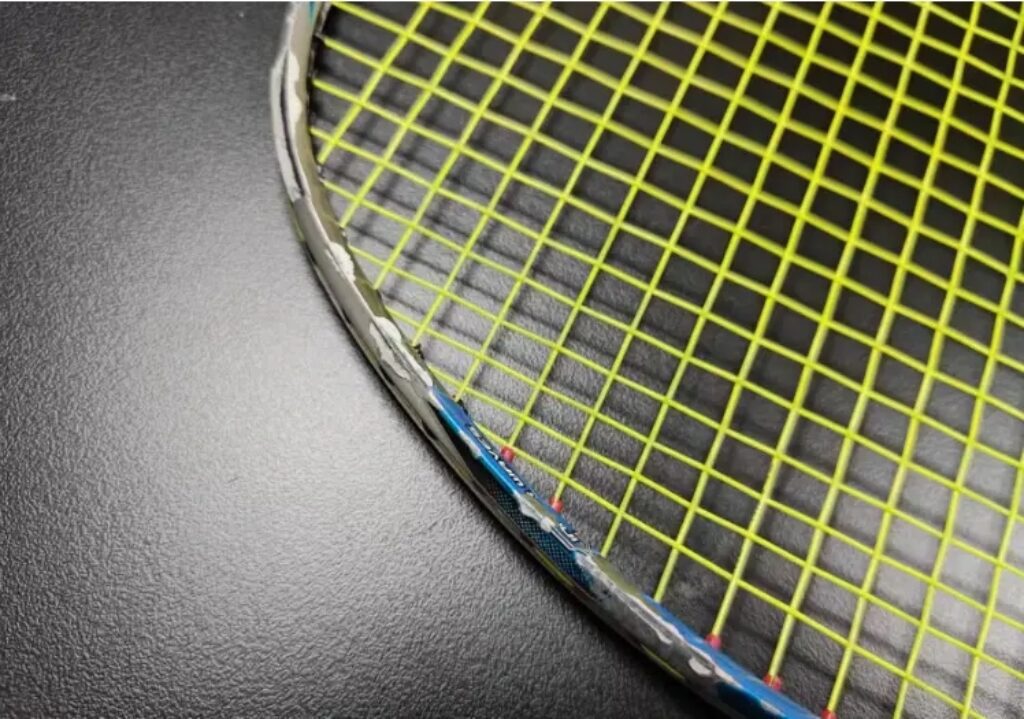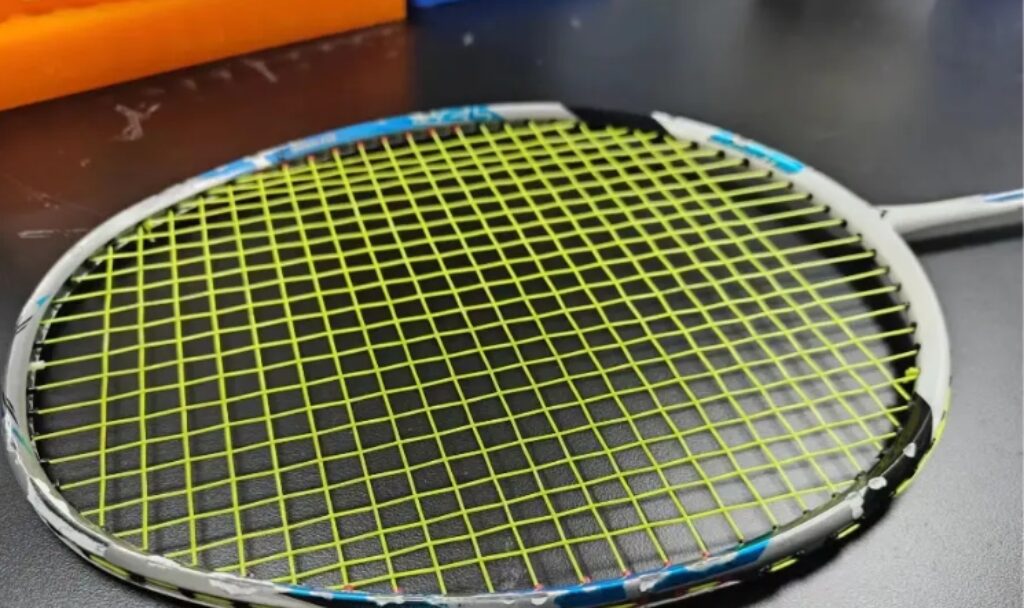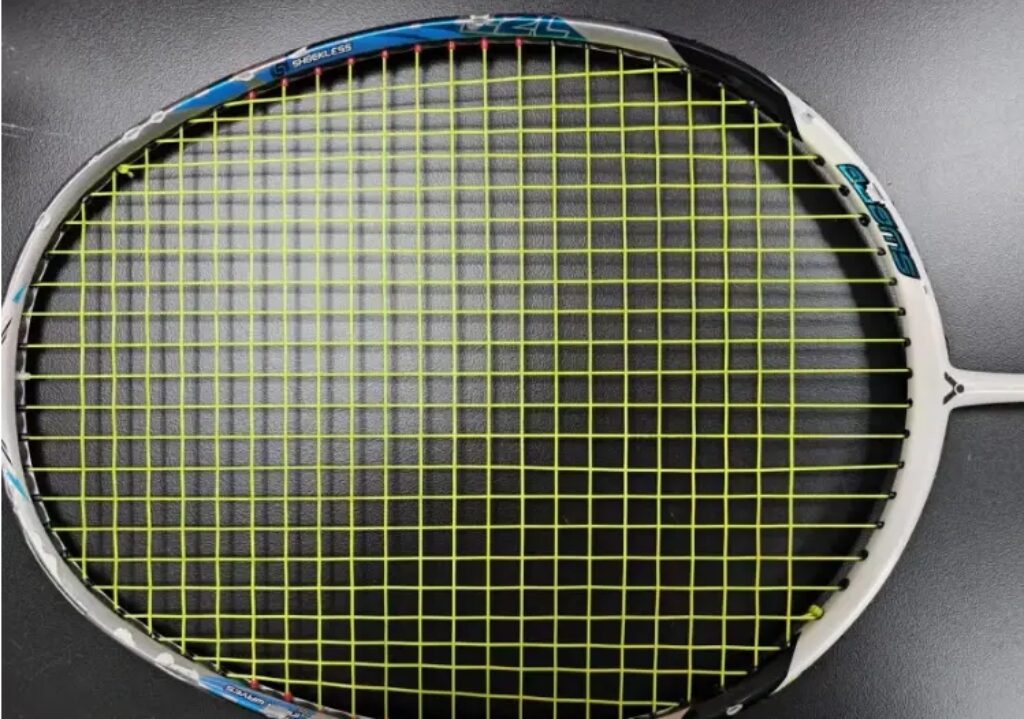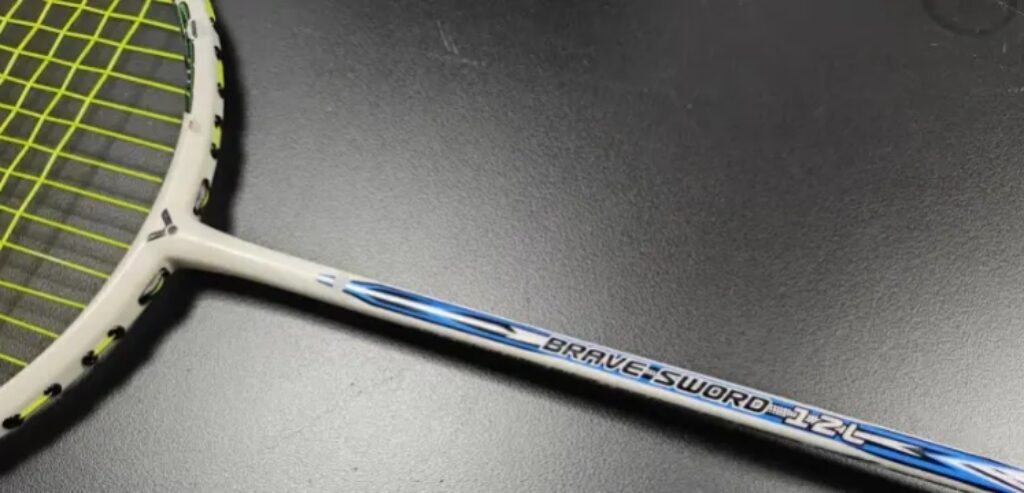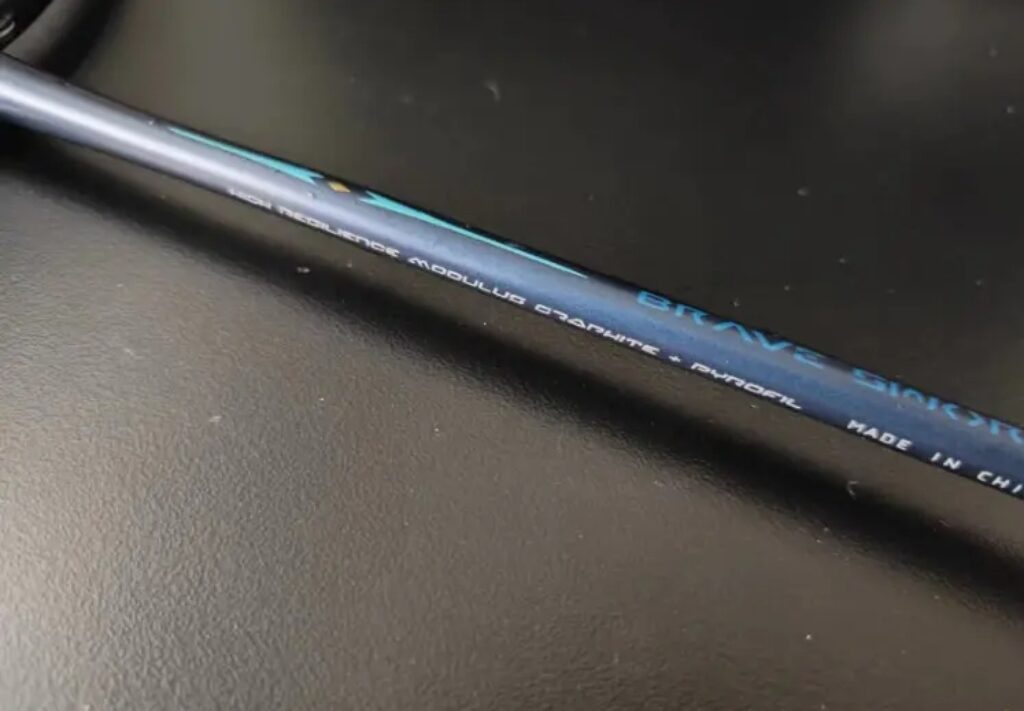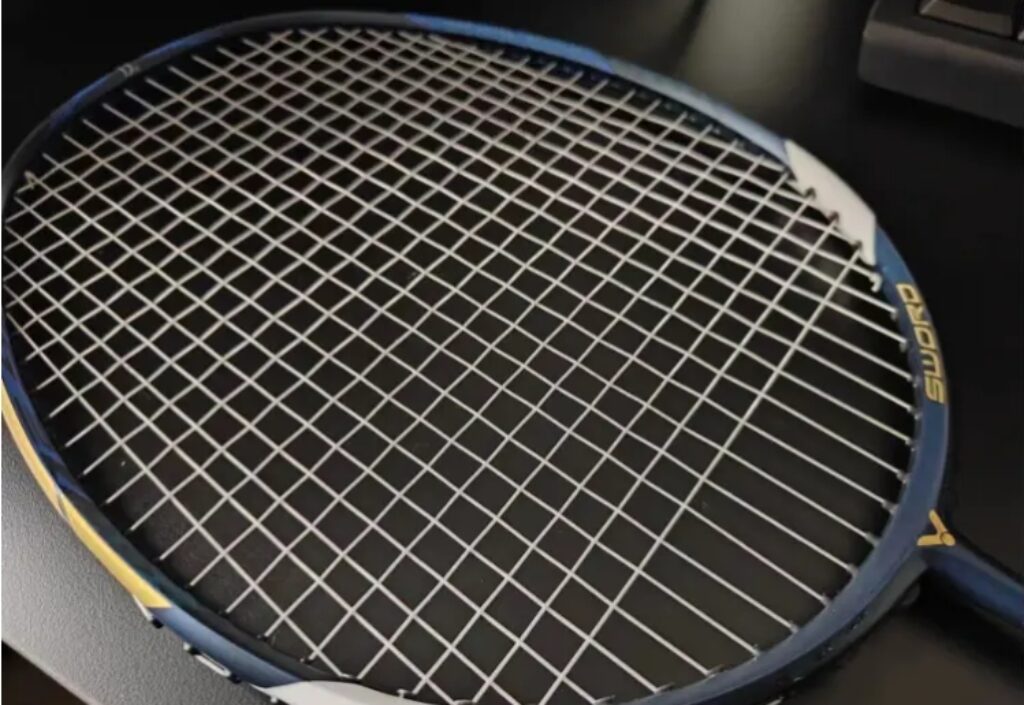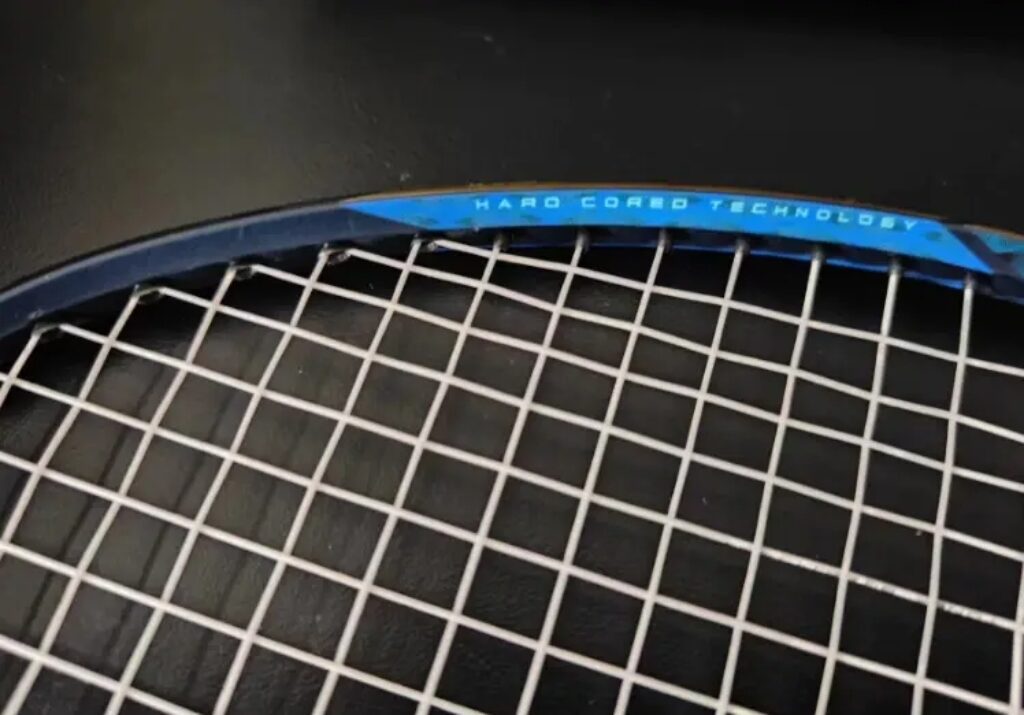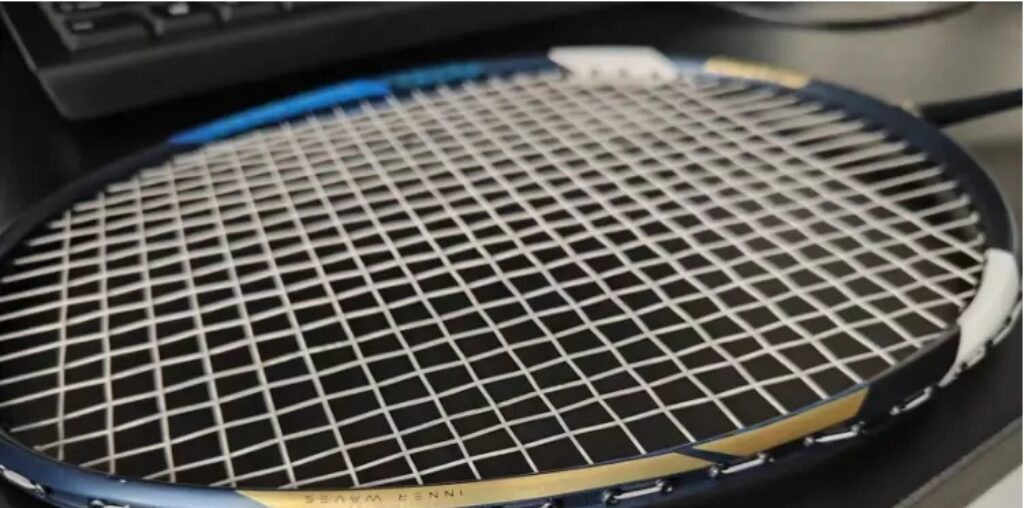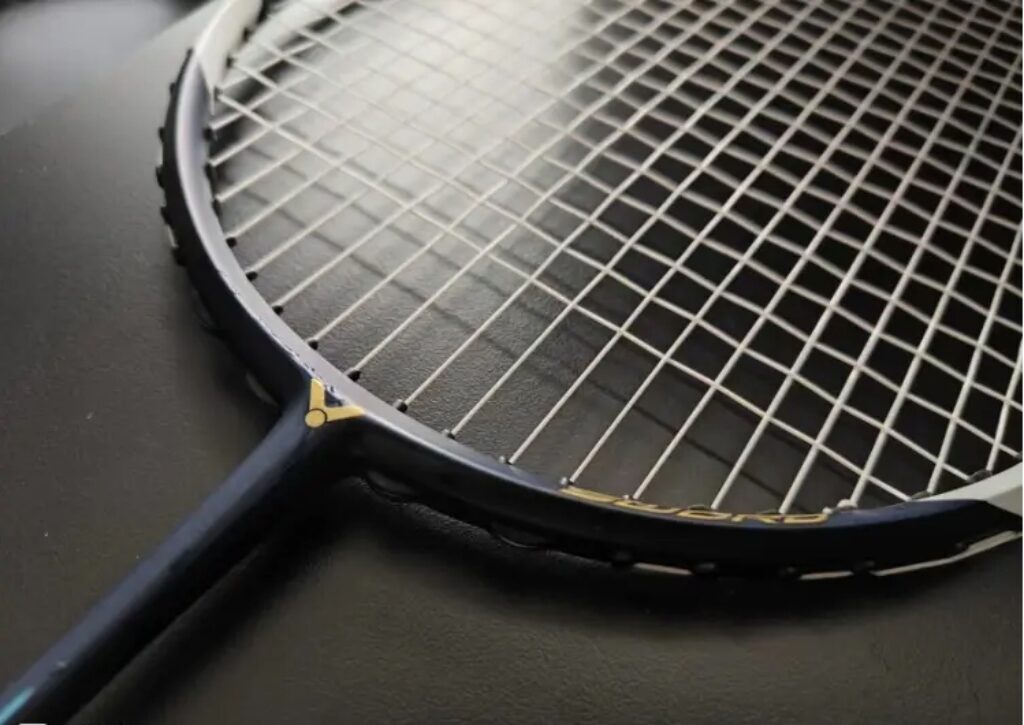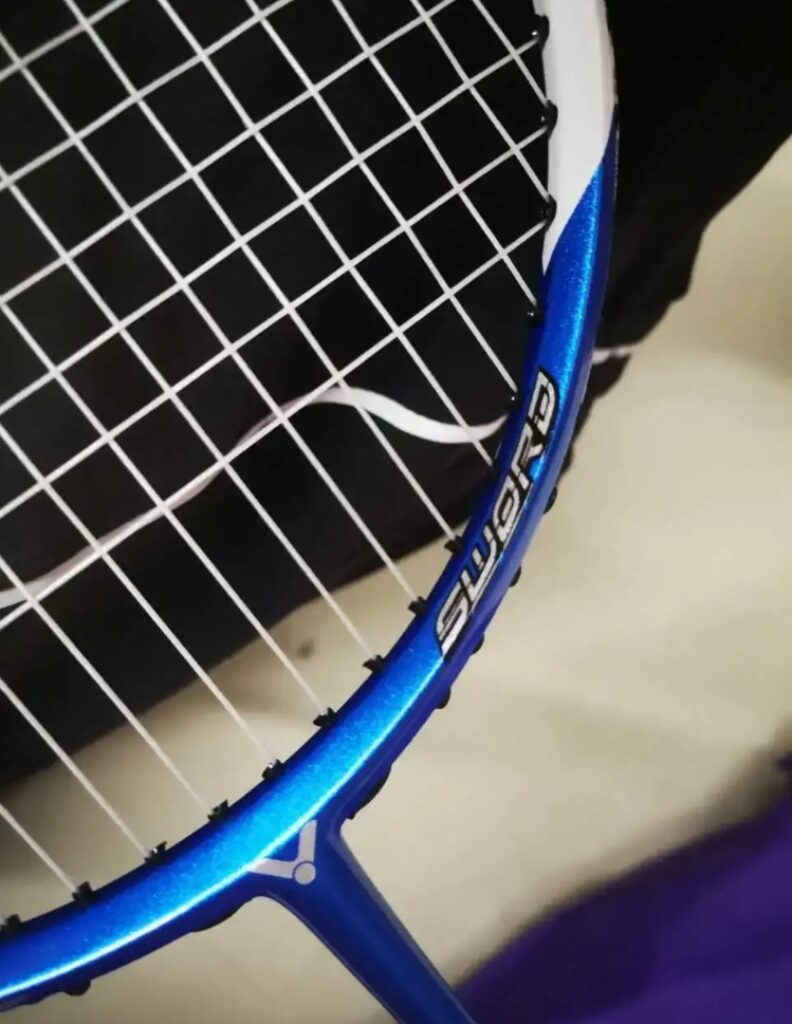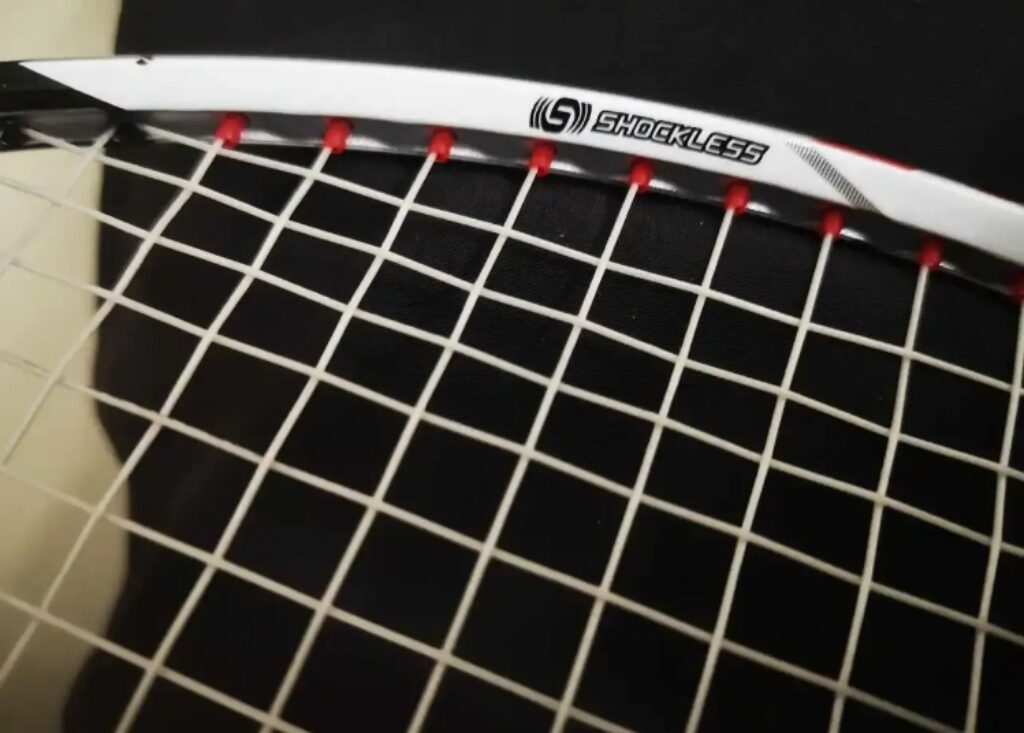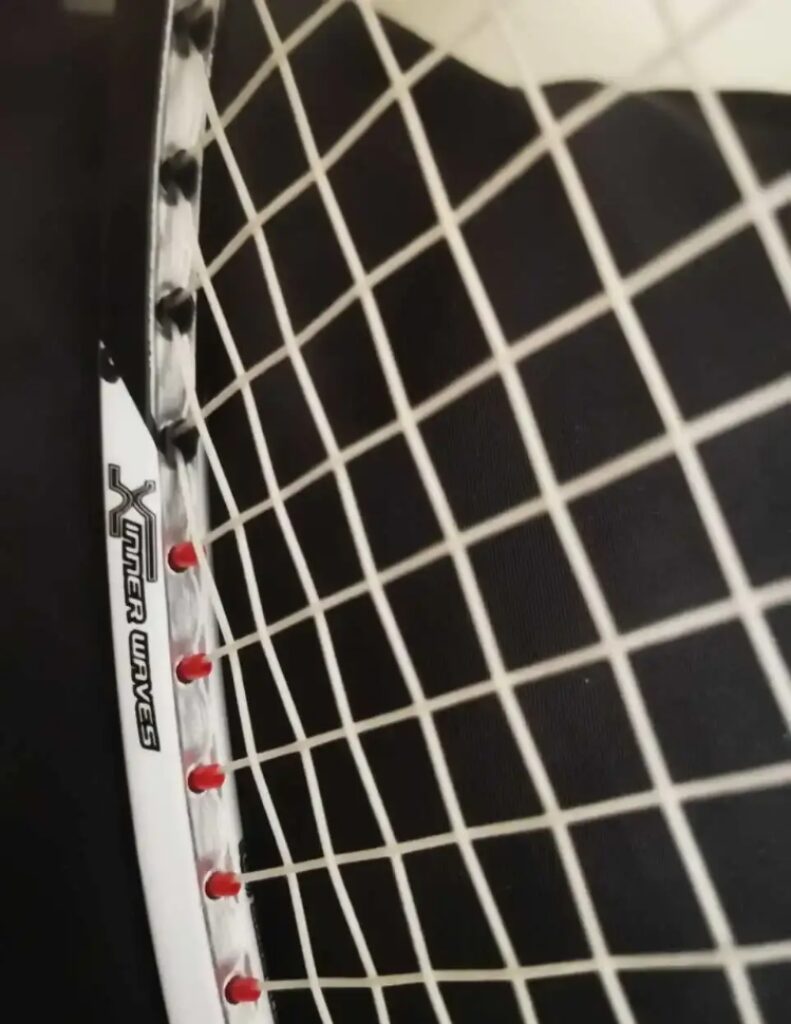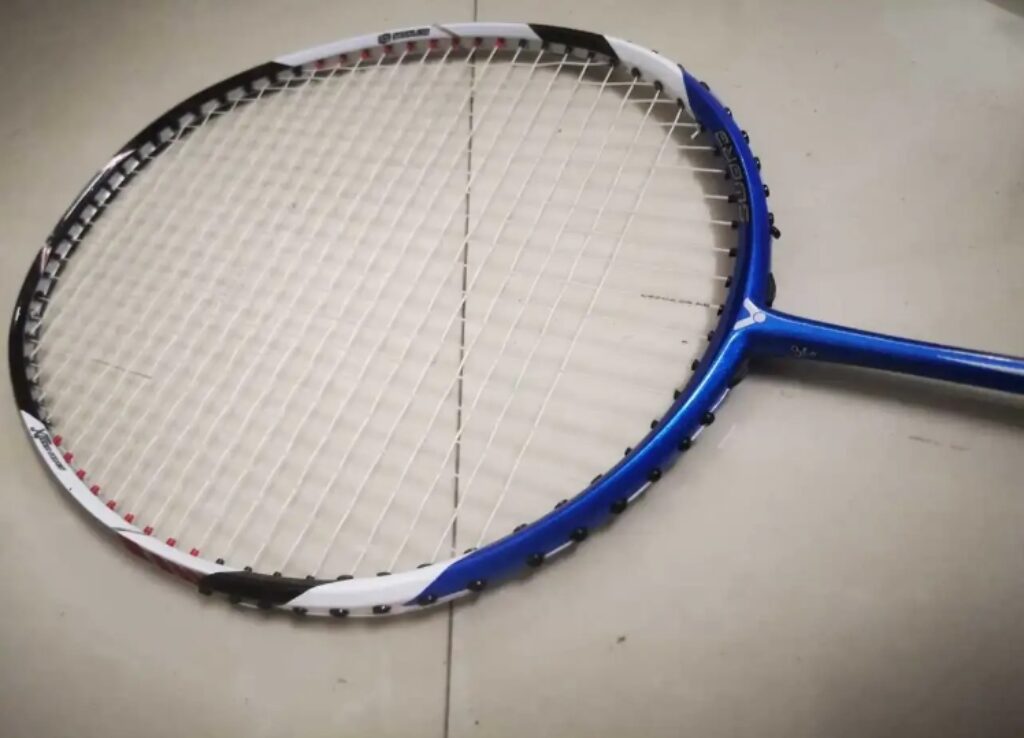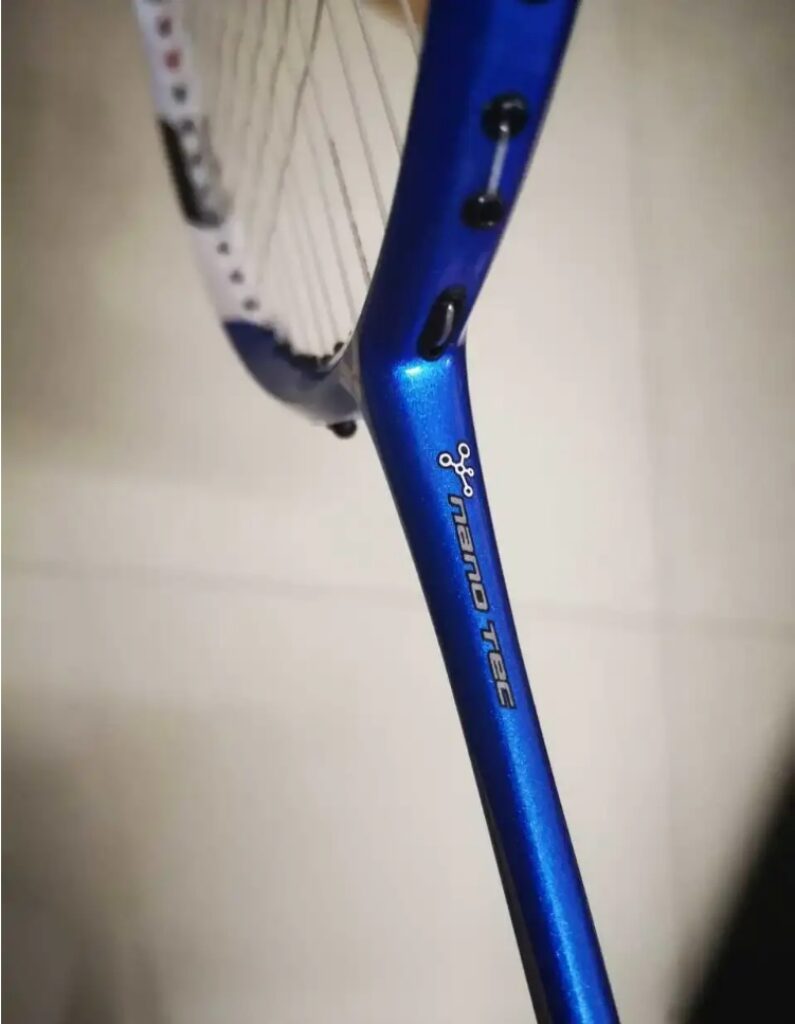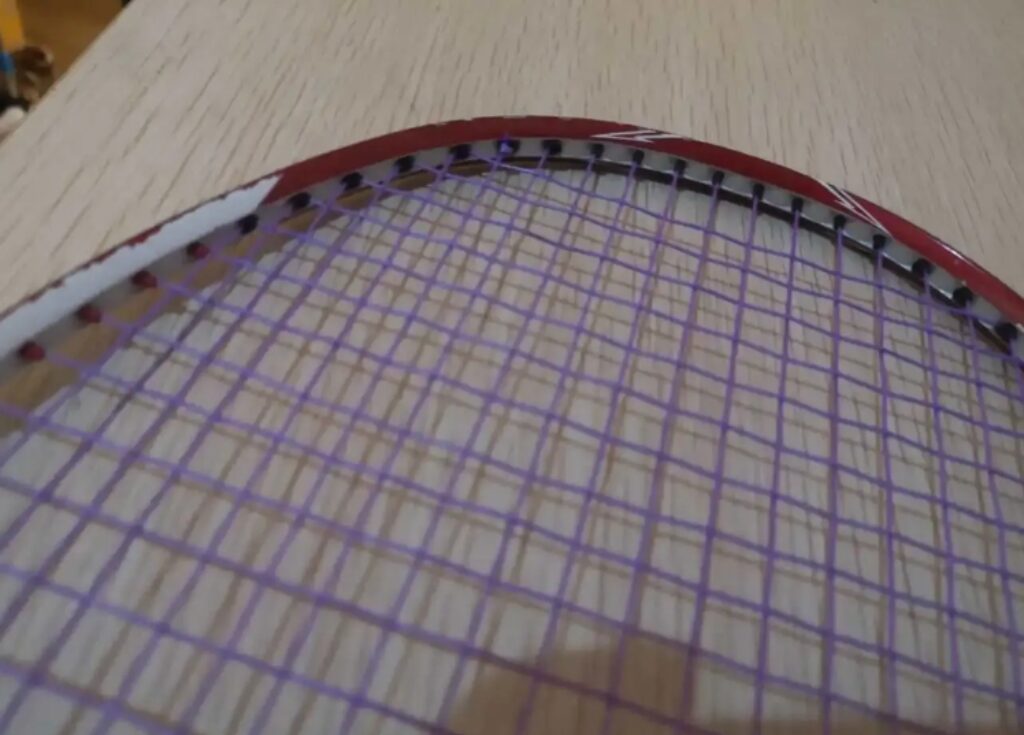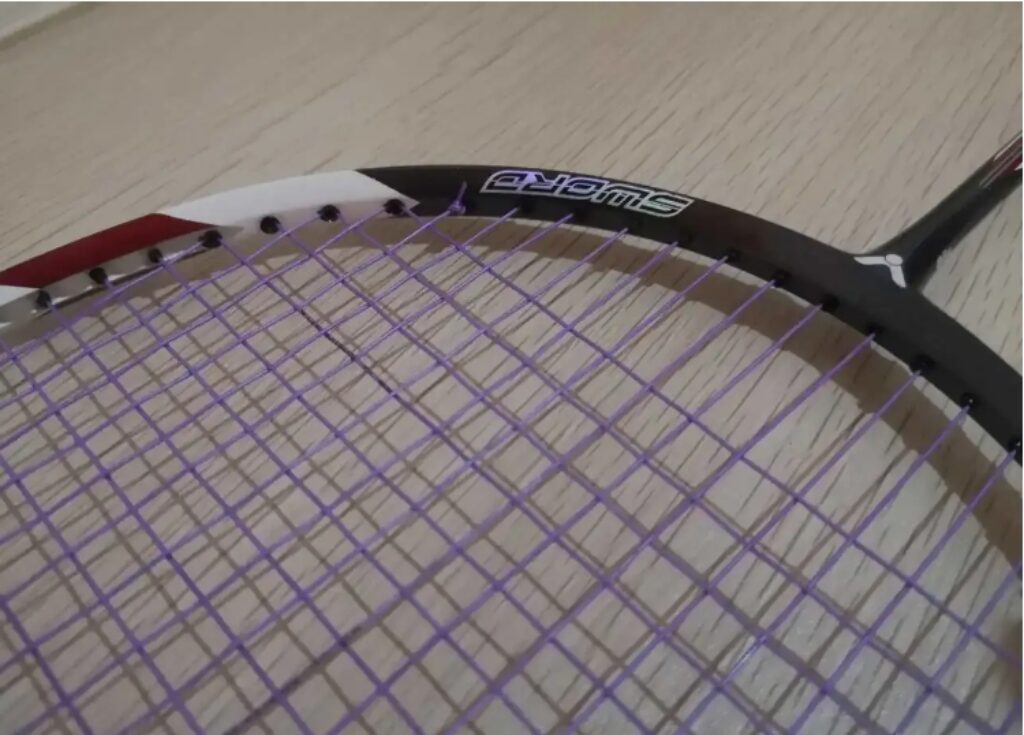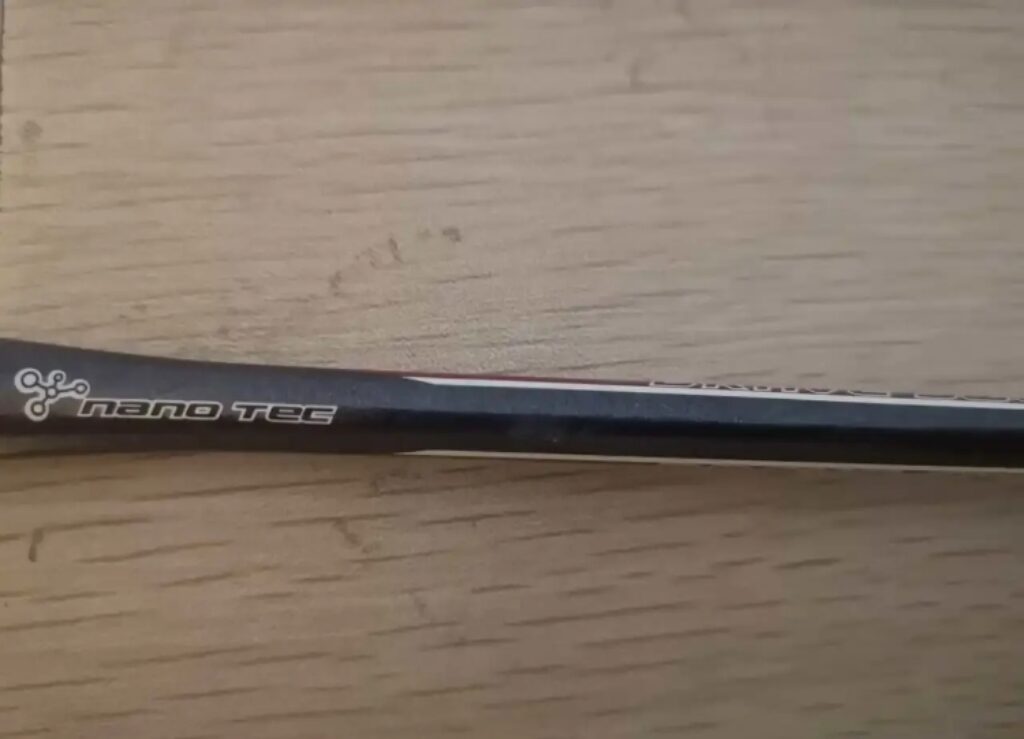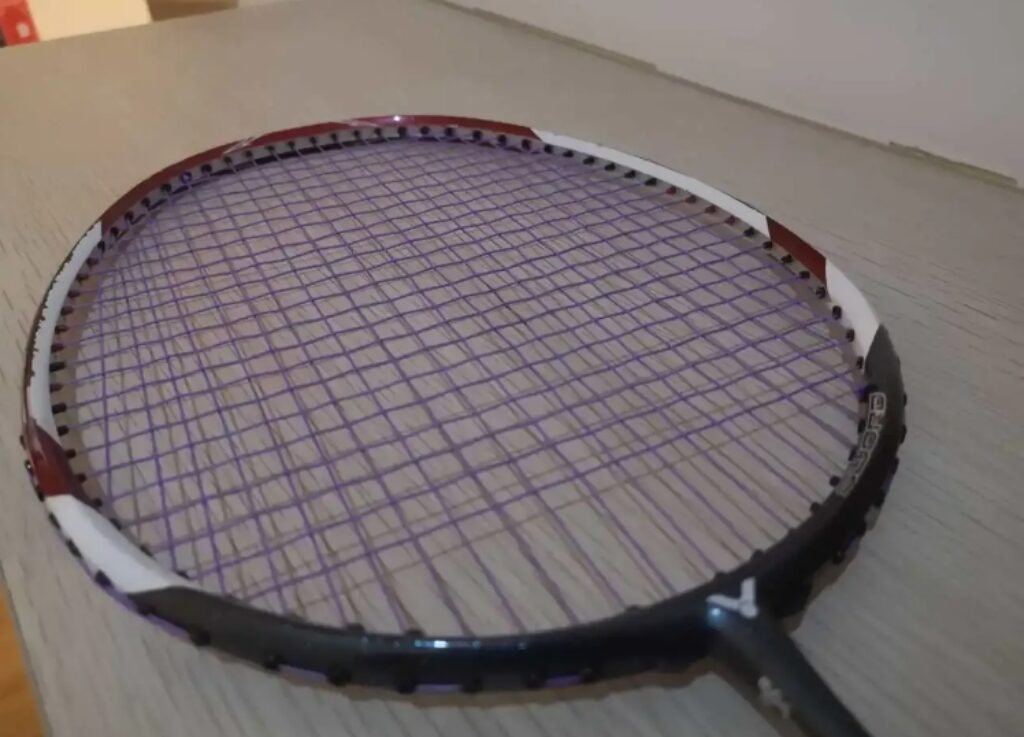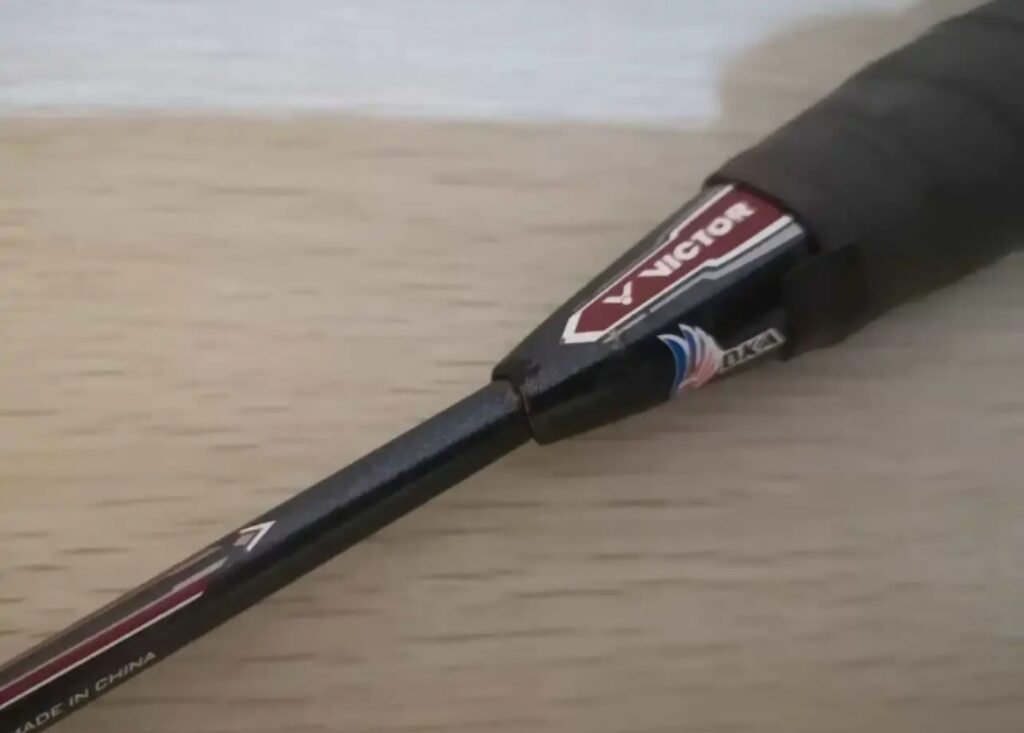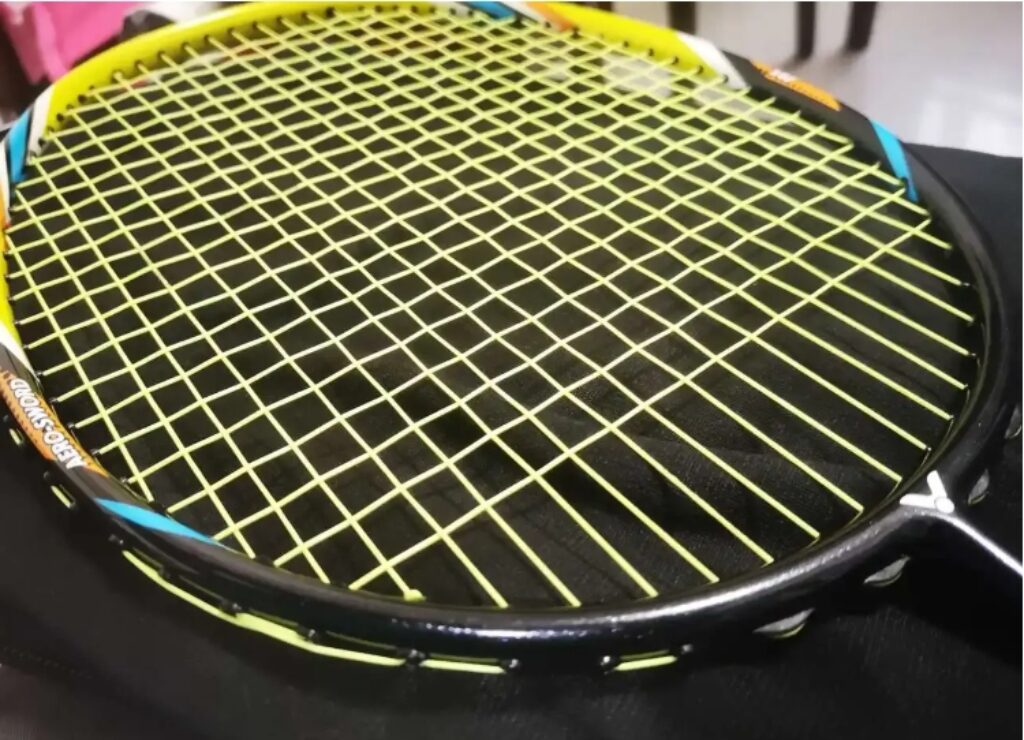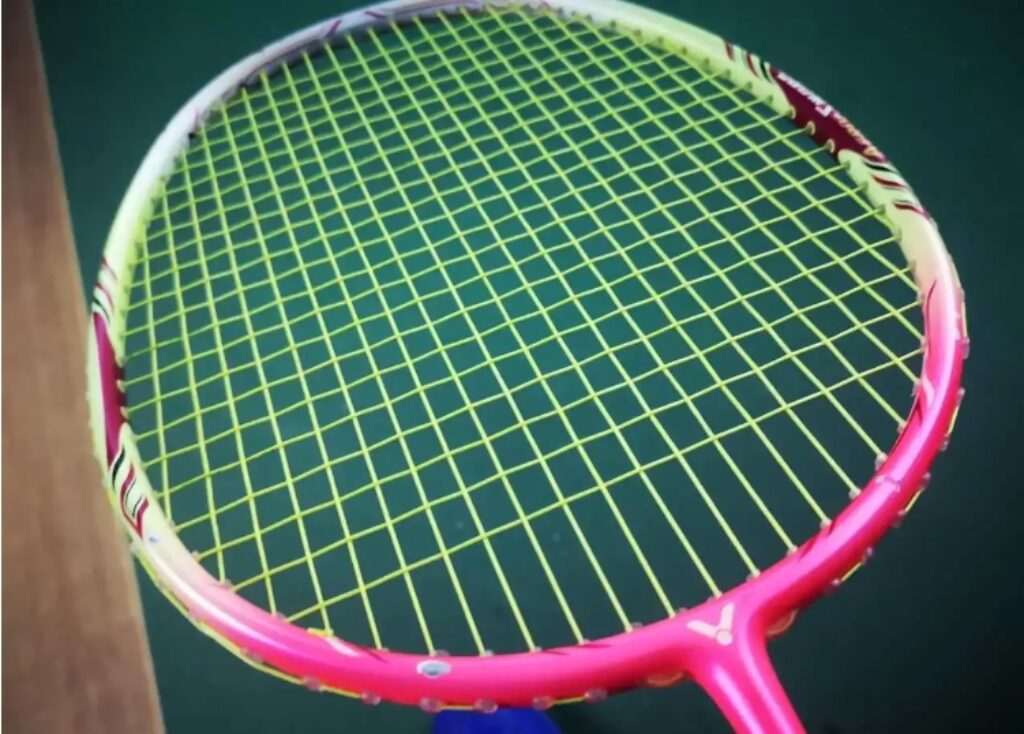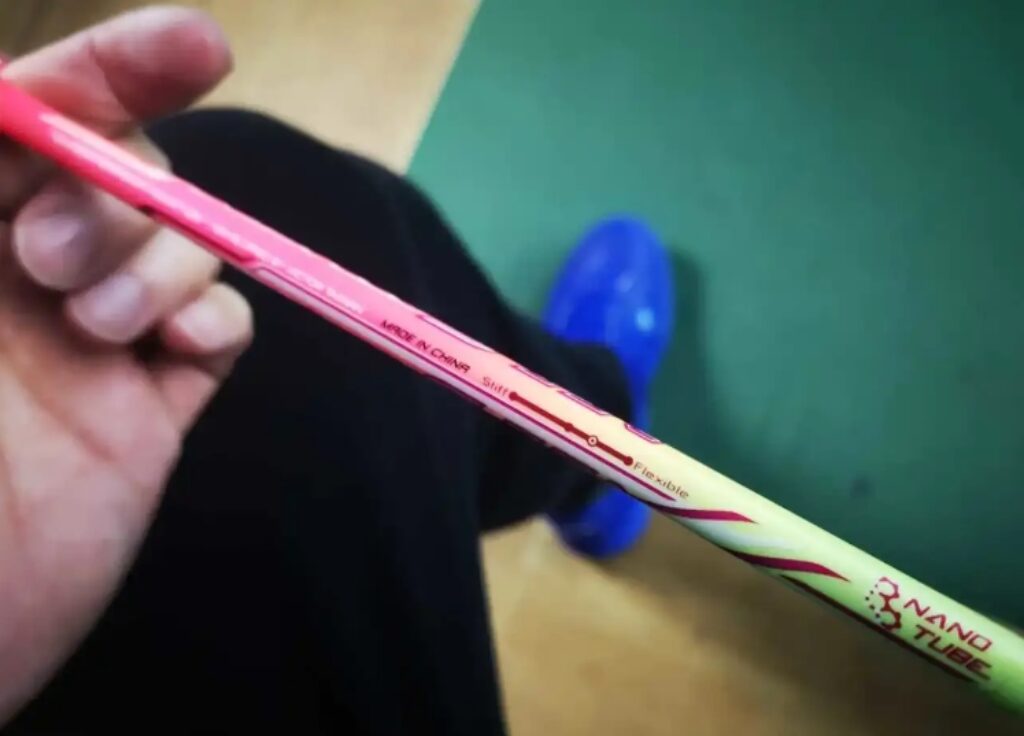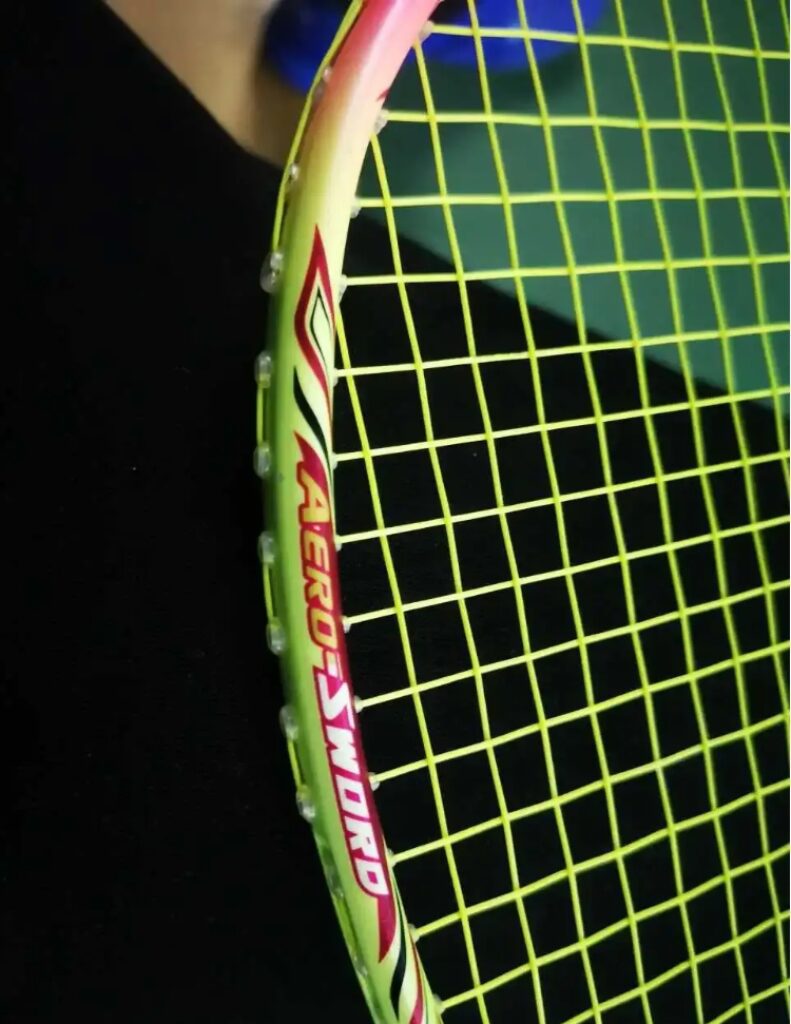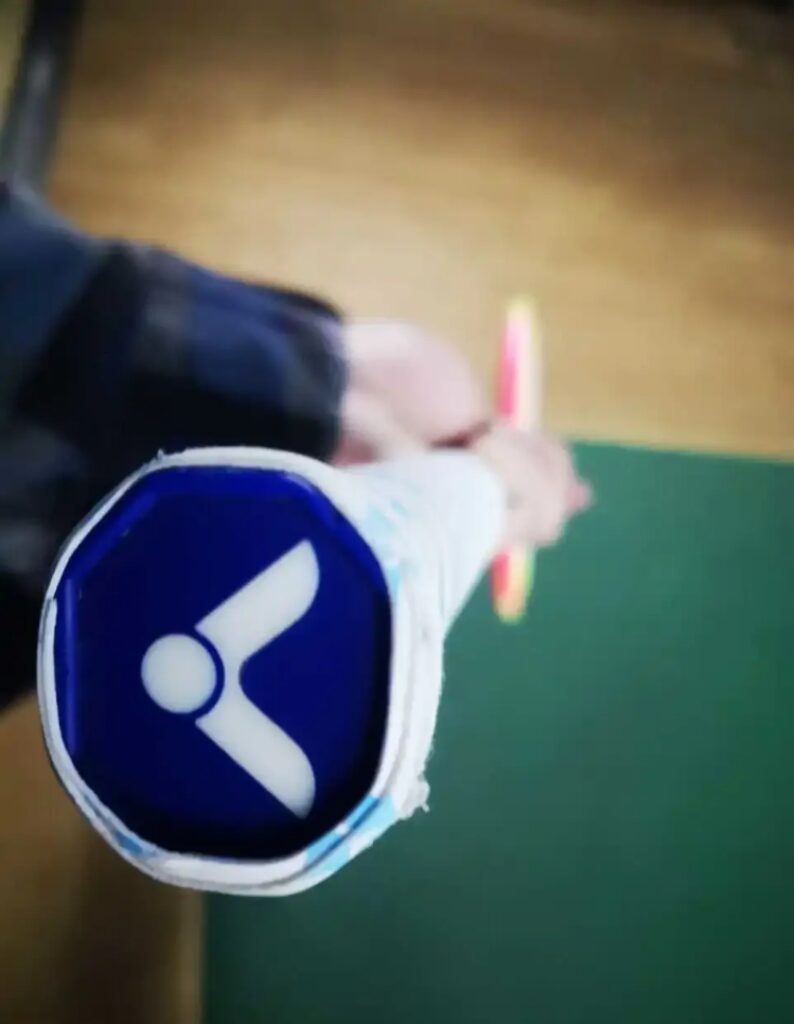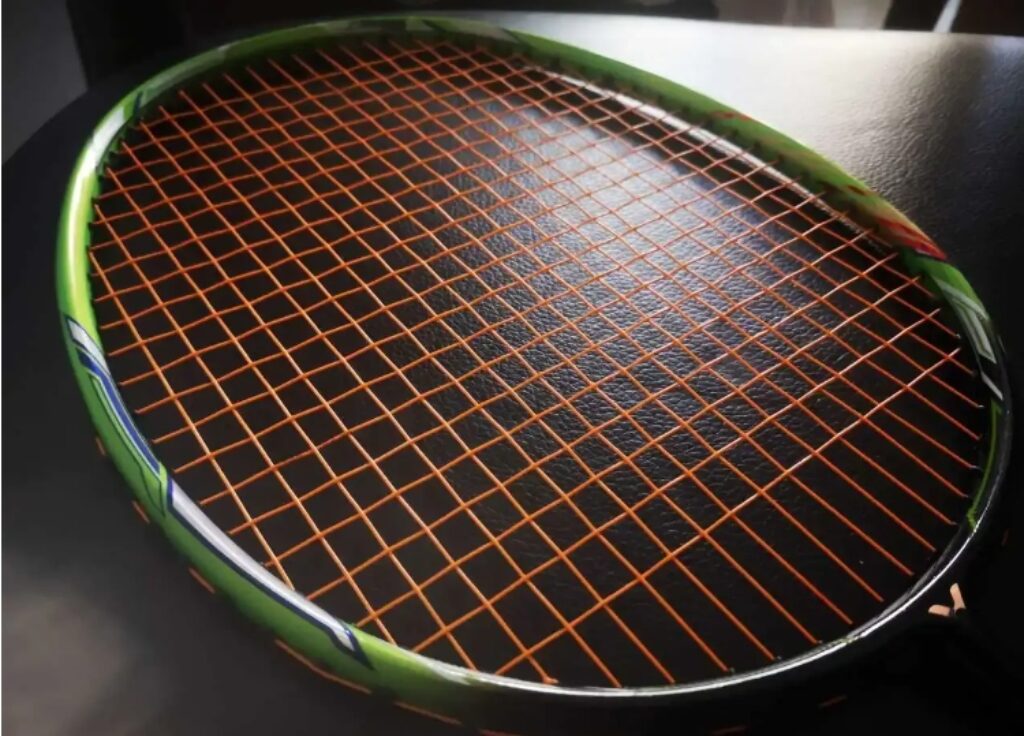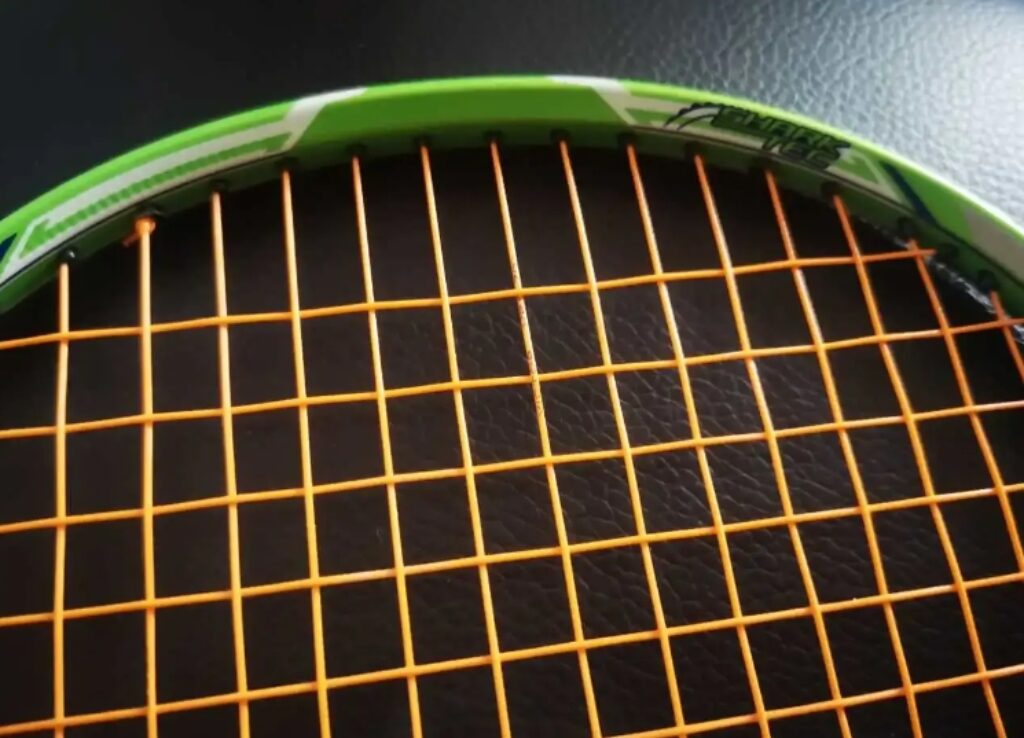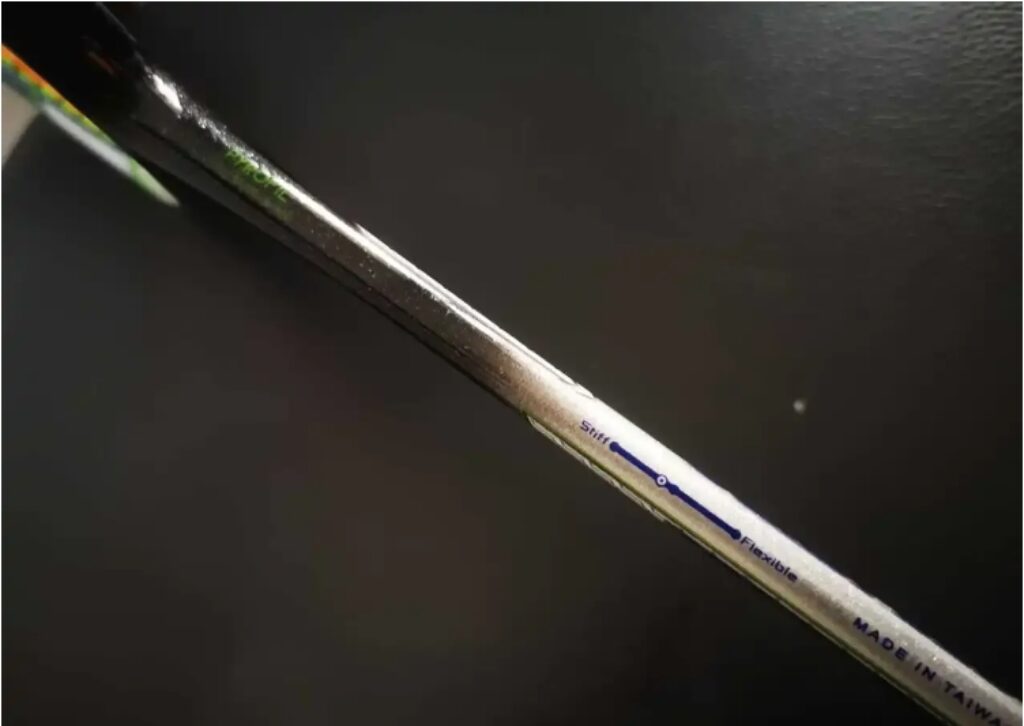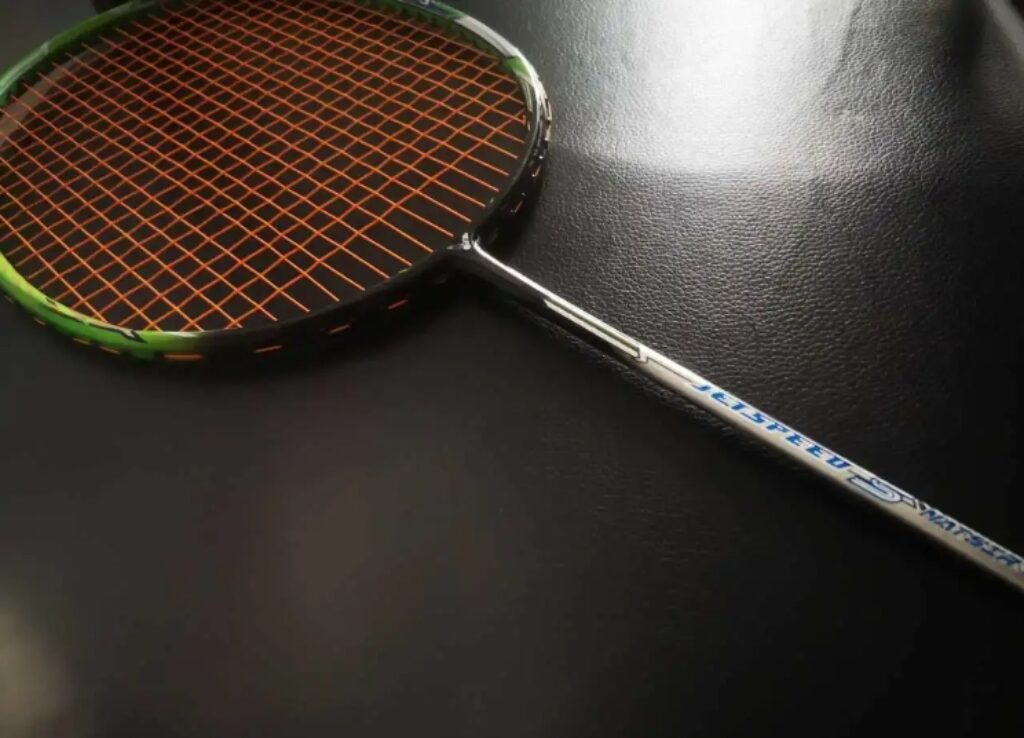Parameters: 3UG5, with bottom cap, total weight 94.4g in used condition, balance point 293mm, 7.0mm shaft, length 215mm, medium stiffness, diamond-cut wind-breaking frame, 72-hole string bed, 9–3 o’clock string grooves, warranty 24lbs, strung at 24lbs with VBS66N.
I like the grass green color. Although the racket doesn’t have too many decorative stickers, I think the unique color choice is very successful and has good recognizability. The transition between green, white, and black on the frame is basic, but it creates a natural layering effect, which is more comfortable than some plain white or pink designs from other brands. It also suits the glossy finish. However, it seems like the 1500 comes in multiple color options, which suggests that there are indeed significant tuning differences in this low-end series from 1100 to 1900.

Although the materials are limited by cost, the Brave Sword frame is still authentically retained, resulting in very low wind resistance and high swing speed, giving a sense of flexibility during use. When focusing power, you can also hear the sound of slicing through the air. Even though low-end materials are used, they can’t hide the fact that the racket face is relatively hard. Under the current string configuration, the 1500 still shows a crisp and elastic characteristic. Combined with the moderate stiffness of the shaft and the large sweet spot, it provides a good feeling of power when hitting the shuttle, with enjoyable feedback. However, in terms of directional control of shots, it falls short. After the rigidity of the frame is reduced, you can’t expect precise control of the shuttle’s landing point, especially with flat or high shots.

Even though the swing weight of the racket is relatively balanced, its downward pressure is not bad, performing even better than the entry-level JetSpeed 02 I used previously. While you can’t expect explosive attack power through the elastic potential energy of the shaft, the rigid feel of the racket face still allows you to hit shots that maintain confidence when you get an opportunity for a downward smash. As for the real power, that depends more on the user’s skill level and the condition of the strings. It may not be very friendly to beginners, but intermediate players won’t feel much discomfort using it.
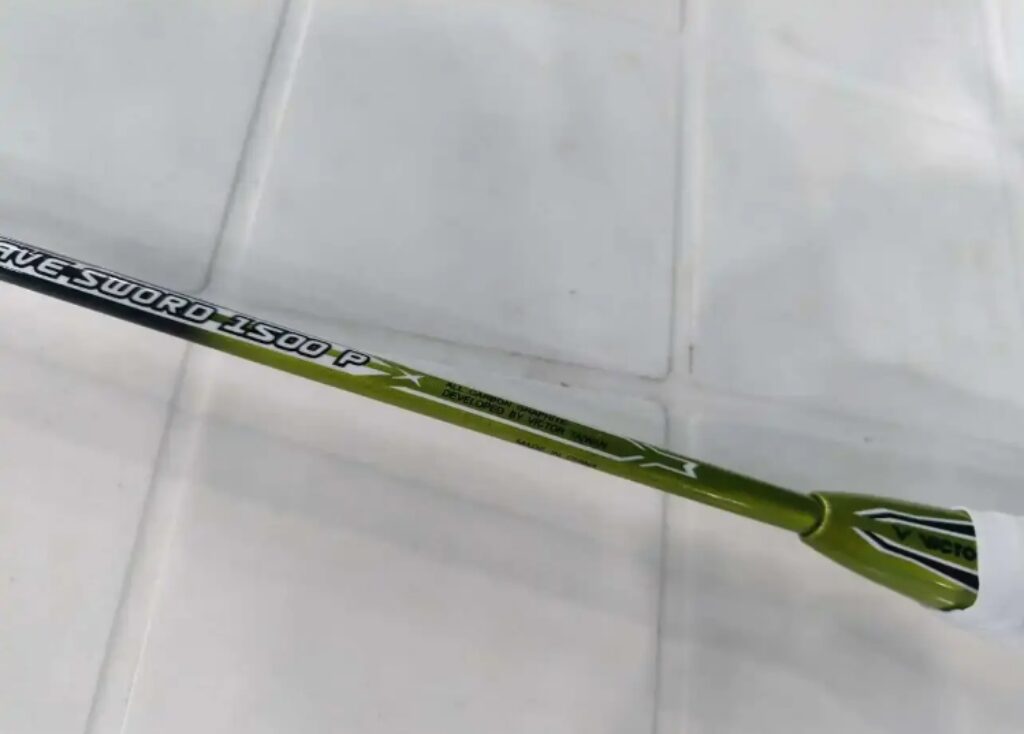
The racket doesn’t feel as springy as high-end Brave Sword models when performing flat drives and blocks, but this actually makes it more controllable in net play, as it’s less likely to bounce too high. The large racket face provides enough forgiveness, and the high swing speed improves its performance in defensive situations. The racket also feels good when generating power in backhand shots, providing a sense of reliability.
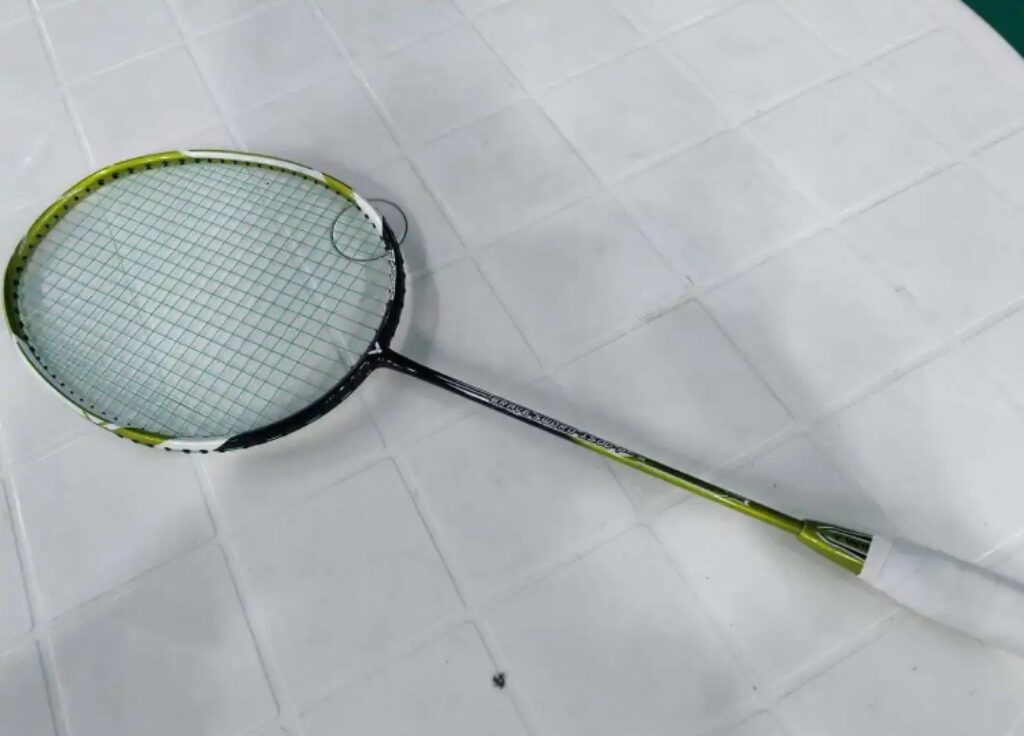
In conclusion, the 1500 seems to be another racket made with lower-end materials that might not excite entry-level players, but it has no major flaws. I personally like it; both the color and the feel meet my expectations for a racket in this price range.



